Museum of Cycladic and Ancient Greek Art
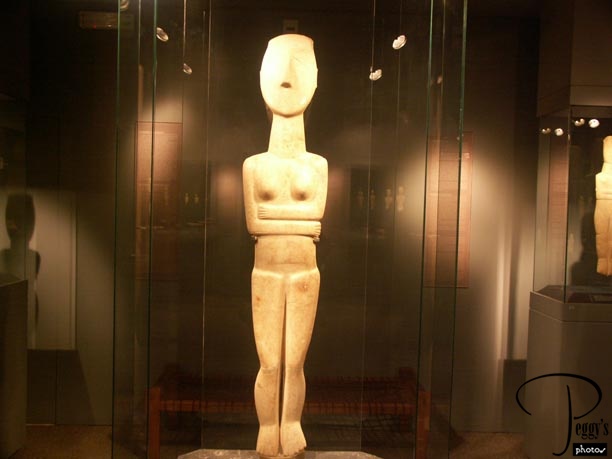
My Trafalgar tour group was not to meet tonight until 7:30 p.m., so there were no tour plans for the day. I got on the Metro at the Akropoli station and took it to the Evangelismo station. I first visited the Museum of Cycladic and Ancient Greek Art, near the Evangelismo station on Vasilissis Sofia, which is a bit east of the Parliament Building. This museum has the world’s largest collection of Cycladic art, which covers the years 3200 to 2200 B.C. The word Cycladic refers to the Greek Cycladic Islands. Their art was influenced by their matriarchial culture, with one of their creations being angular, female figures. This photo shows one of these unusual figures.

Museum of Cycladic and Ancient Greek Art
Museum of Cycladic and Ancient Greek Art
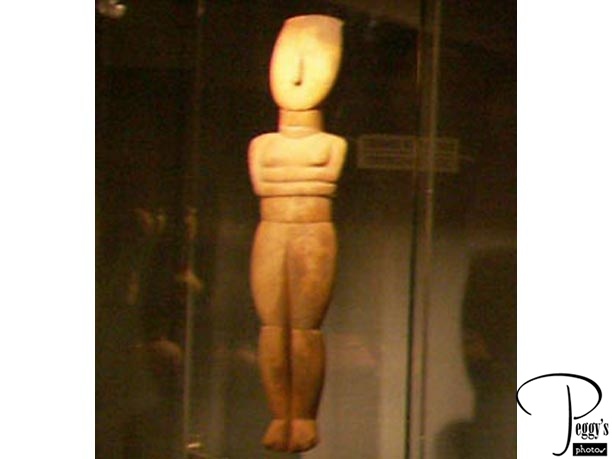
Another of these marble statues. The painting of both Modigliani and Picasso were influenced by Cycladic art.

Museum of Cycladic and Ancient Greek Art
Museum of Cycladic and Ancient Greek Art
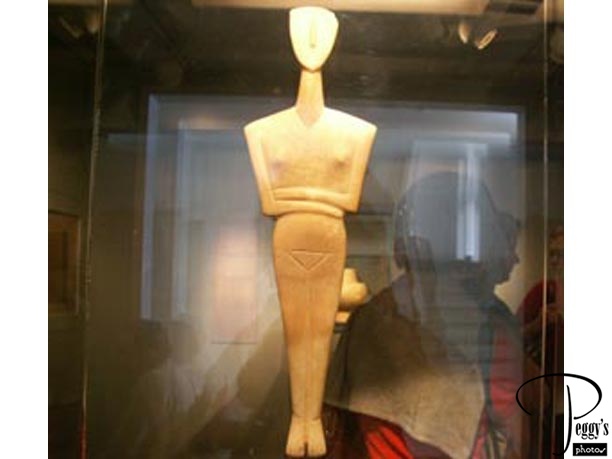
Another of the figures.

Museum of Cycladic and Ancient Greek Art
Museum of Cycladic and Ancient Greek Art
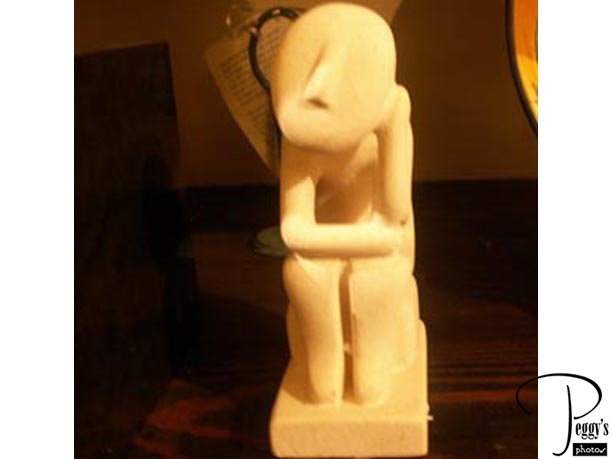
Though not of a female but still Cycladic art, this is my favorite: the original Thinker. This is a photo of a museum reproduction that I purchased. Since I didn’t take a photo of it at this museum, I think that I must have seen the original at the National Archaeological Museum, which also has a collection of Cycladic art and where photos are not allowed.

Museum of Cycladic and Ancient Greek Art
Museum of Cycladic and Ancient Greek Art
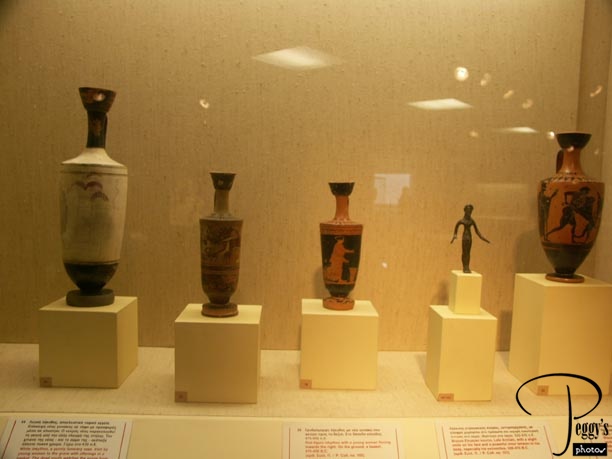
Greek vases on display in this museum. The museum’s collection of Greek Art is from the Bronze Age to about the 6th century A.D.

Museum of Cycladic and Ancient Greek Art
Museum of Cycladic and Ancient Greek Art
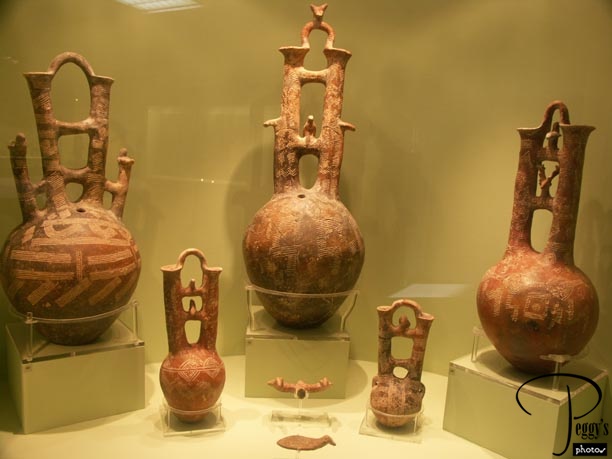
Interesting vases.

Museum of Cycladic and Ancient Greek Art
Museum of Cycladic and Ancient Greek Art
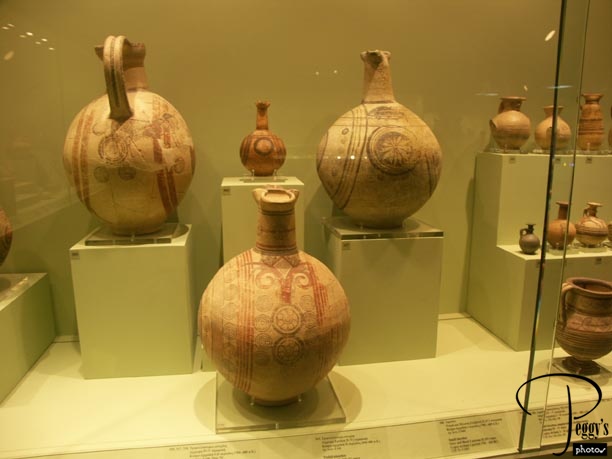
Different vases.

Museum of Cycladic and Ancient Greek Art
Museum of Cycladic and Ancient Greek Art
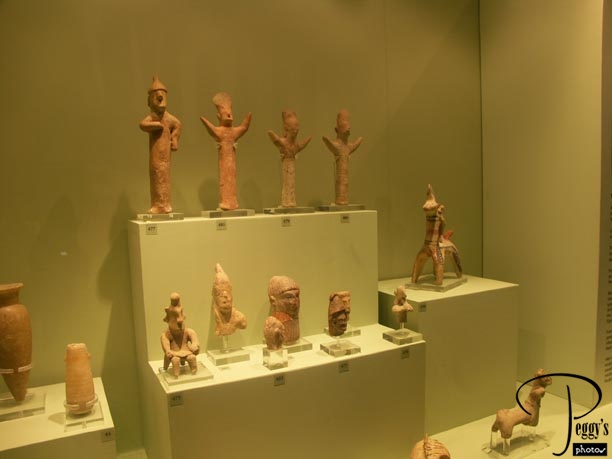
Figurines.

Museum of Cycladic and Ancient Greek Art
Museum of Cycladic and Ancient Greek Art
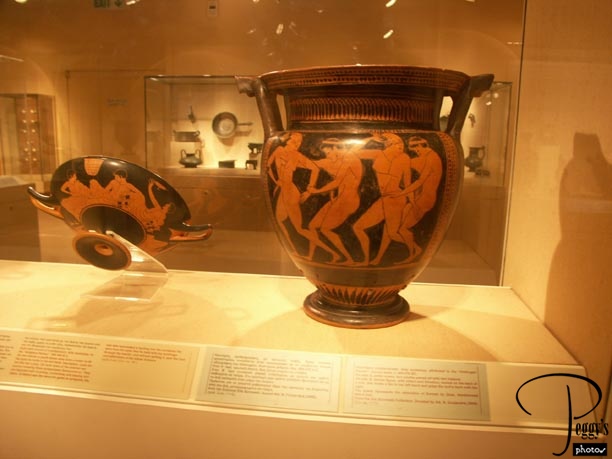
Greek vases. I greatly enjoyed this museum. Next, I walked a short distance to visit the Benaki Museum which is in a restored 19th–century mansion. It covers Greek art from antiquity to the 20th century and also Islamic and Chinese art. No photos were allowed inside the museum, but you can see part of its collection at www.benaki.gr. However, I am somewhat disappointed with the selection of photos on their website because it doesn’t fully illustrate its unbelievably priceless pieces. I was in awe of the jewelry, etc., on display. The Benaki Museum also has a collection of folk costumes, somewhat different from the ones at the Museum of Greek Folk Art.

Museum of Cycladic and Ancient Greek Art
Kolonaki Square
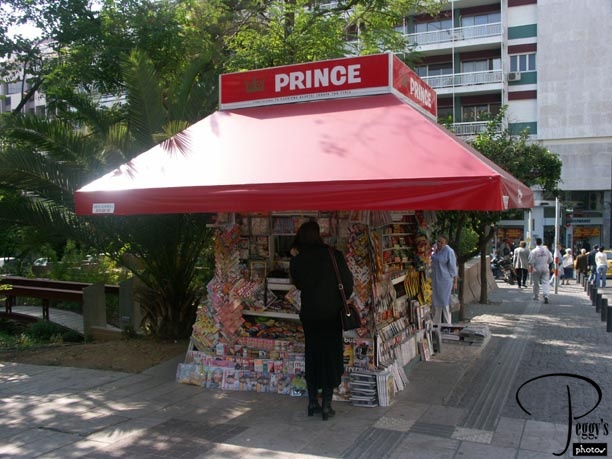
Mary, our Athens Trafalgar tour rep, suggested that I go for coffee at Kolonaki Square, just up the hill from the Benaki Museum. It was about 12 p.m. and I was ready for lunch. I didn’t realize that when Mary said coffee, that is exactly what she meant. There were sidewalk coffee houses lining the square with, seemingly, hundreds of small tables with all the tables occupied. There was also a Goodey’s on the square––the Greek version of McDonald’s. I ate there and actually enjoyed my hamburger, fries, and Diet Coke. This photo shows a typical Greek newspaper stand that was in the square. These stands also sell water, soda, candy, cookies, other snacks, post cards, magazines, souvenirs, etc.

Kolonaki Square
Lycabettes Hill
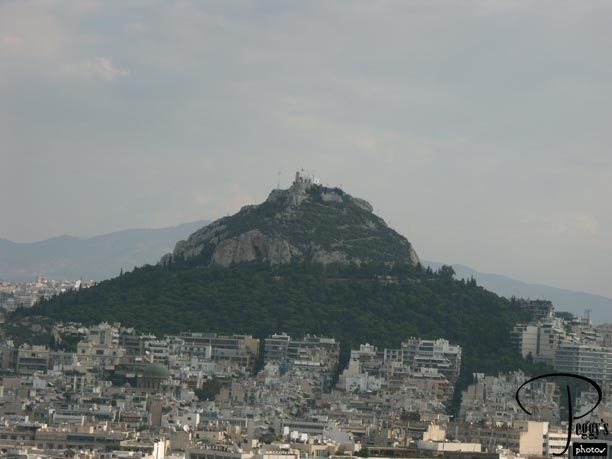
My next destination was the top of Lycabettes Hill––also spelled Likavitos and Lykavittos. This is a photo of Lycabettes Hill that I took from the top of the Acropolis.

Lycabettes Hill
Lycabettes Hill
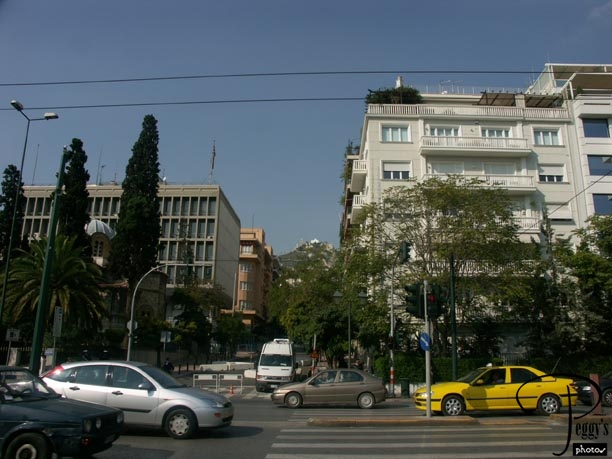
You can see the Church of St. George on top of the hill in the middle of the photo.

Lycabettes Hill
Lycabettes Hill
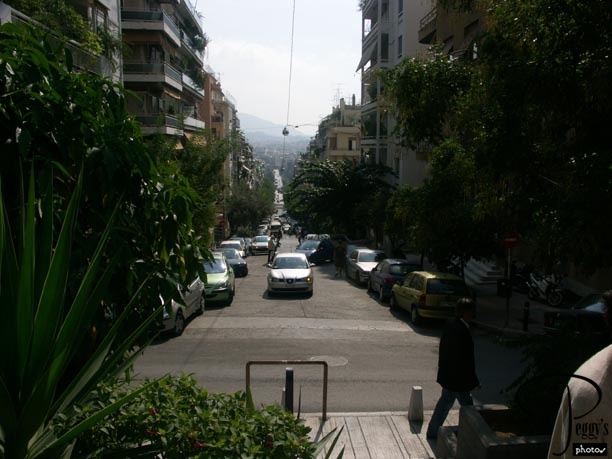
There is a funicular to take you to the top of Lycabettes Hill, but first you have to climb up from the bottom of the hill to get to it. I thought that I must be in San Francisco––the street up to the top was San Francisco–steep.

Lycabettes Hill
Lycabettes Hill

I wasn’t too happy to discover that after the steep ascent up the street that next you had to climb up numerous steps to get to the funicular, some of them without railings––I think that I counted over 100 steps. I took a break at the Friday Kolonaki flower, fruit, and vegetable market that was laid out on a cross street after the first flight of steps. Obviously, since they were shopping here, the Athenians do not have trouble with this hill or the steps. Flowers for sale.

Lycabettes Hill
Lycabettes Hill
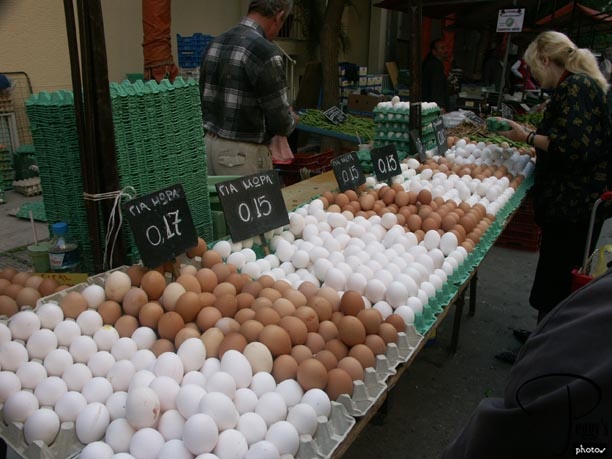
Eggs for sale. That is 17 euro cents per egg (for the most expensive one), which comes out to about U.S. 21 cents.

Lycabettes Hill
Lycabettes Hill
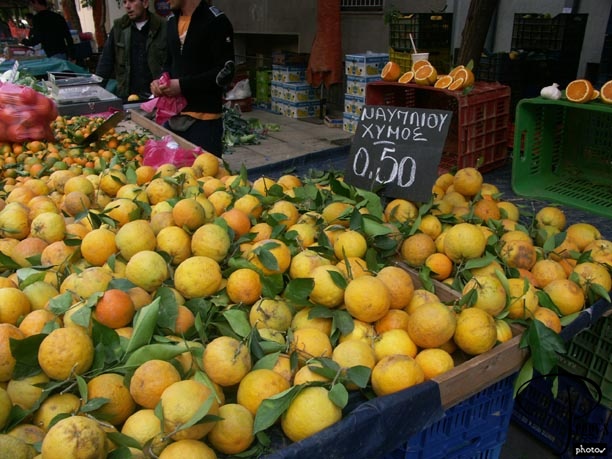
Oranges––50 euro cents, but that is for a kilo of oranges (2.2 pounds), which comes to about U.S. 30 cents per pound.

Lycabettes Hill
Lycabettes Hill

Pomegranates––2,30 euros per kilo or about U.S. $1.30 per pound (I think that pomegranates are sold by the piece in the U.S.). Pears––1,60 euros or about U.S. $1.00 per pound.

Lycabettes Hill
Lycabettes Hill
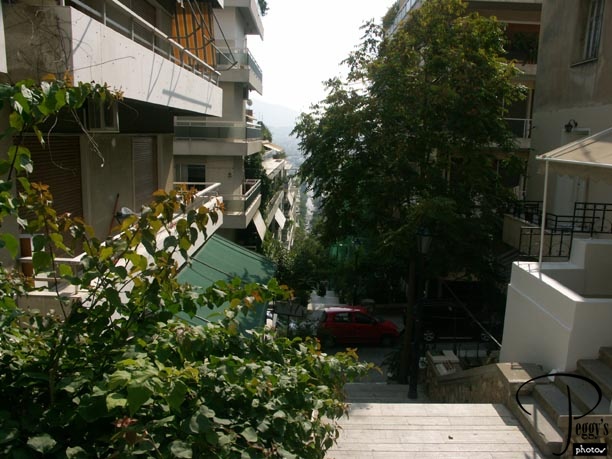
Climbing up more steps.

Lycabettes Hill
Lycabettes Hill
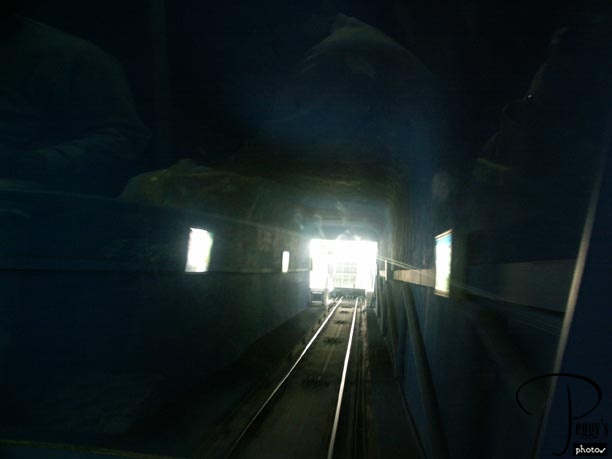
I made it to the funicular. I got a front row seat on it and was all ready to take photos of us going up the hill. It was not mentioned in any guide book that I had on Athens that the funicular was actually going to travel inside a tunnel carved into the hill. So, I got this photo of the tunnel. But when I went to get out of the funicular, I discovered that there was no railing alongside the front car to hang onto for climbing up some very steep steps out of the tunnel. Of course, this didn’t bother anyone else, but I am always afraid that I will lose my balance on steep steps. Well, I did make it up the steps (I had no choice) with one hand on the steps to balance me. It does work, but it does take awhile to get your dignity back after you are being watched by a concerned group of people.

Lycabettes Hill
Lycabettes Hill
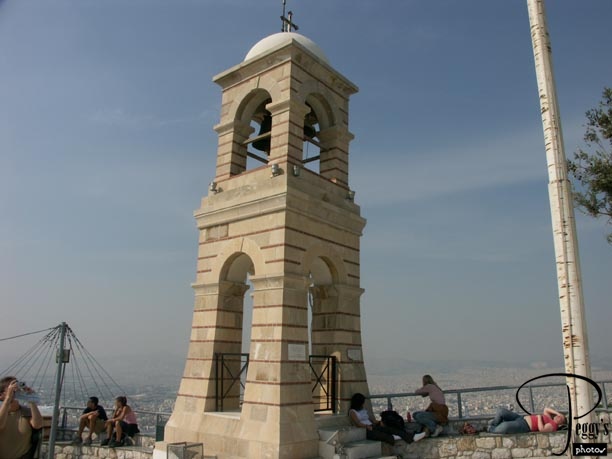
I made it to the top of the hill!

Lycabettes Hill
Lycabettes Hill
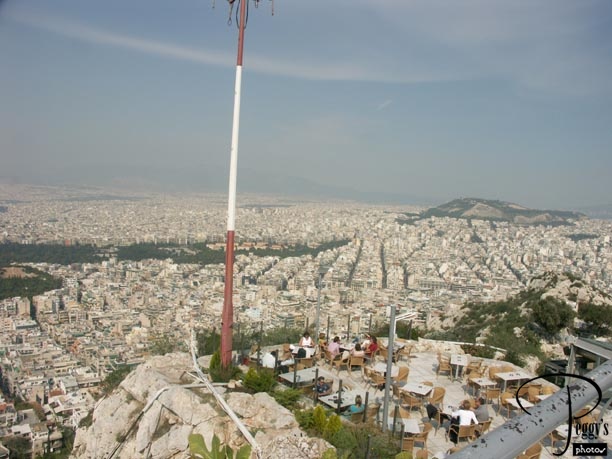
View of Athens from the top of the hill and the restaurant overlooking Athens. I had a cappuccino at the restaurant.

Lycabettes Hill
Lycabettes Hill
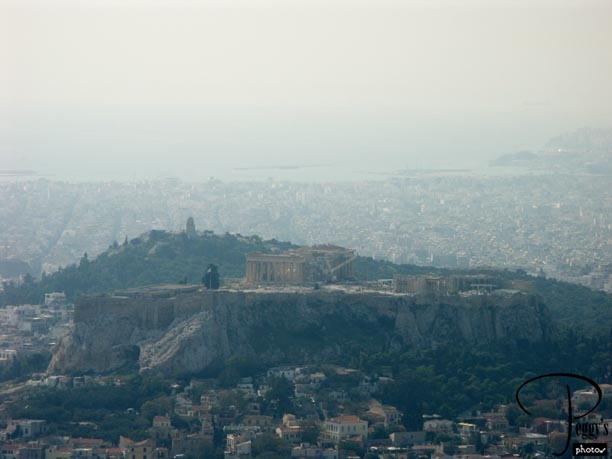
This view of the Acropolis, Filopappou Hill (which I climbed a couple of days ago), and the Aegean Sea was worth the climb.

Lycabettes Hill
Lycabettes Hill
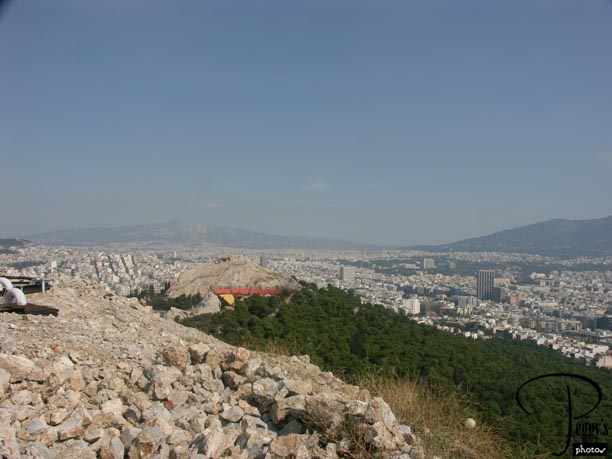
Another view of Athens. The orange/yellow structure is the Theatre of Lycabettes.

Lycabettes Hill
Lycabettes Hill
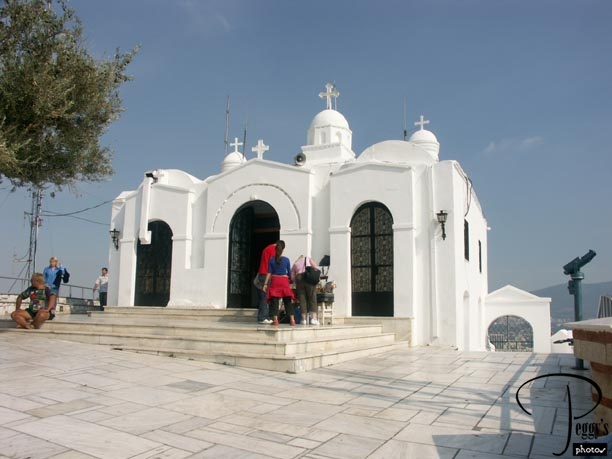
The 19th–century Chapel of St. George (Agios Georgios) on top of the hill.

Lycabettes Hill
Lycabettes Hill
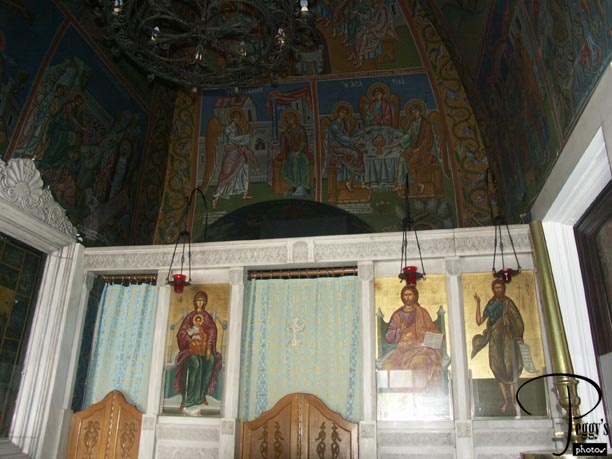
Inside the Church of St. George.

Lycabettes Hill
Lycabettes Hill
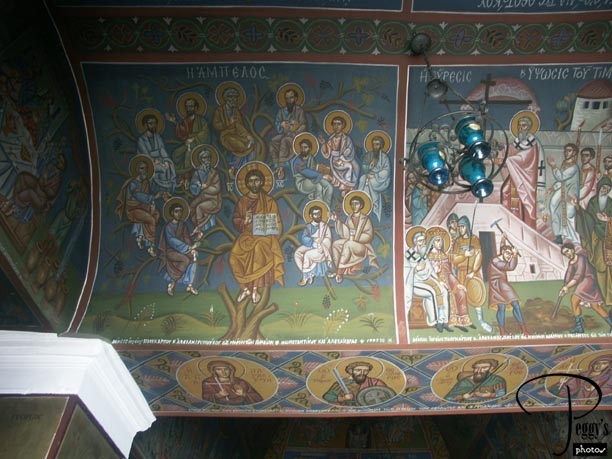
Wall paintings inside the Church of St. George. On Easter Sunday eve, there is a procession down Lycabettes Hill, starting from this church.

Lycabettes Hill
Lycabettes Hill
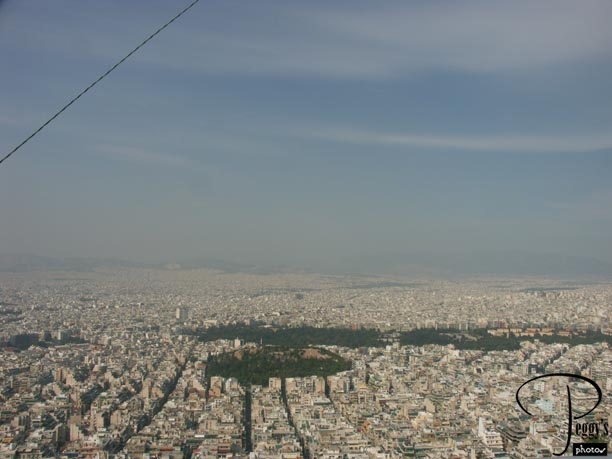
Another view of Athens. I made it down the funicular with no problem as I sat in the top car and could use a railing to go down those steep tunnel steps. When I got off the funicular, I looked at my map to see if there was another street, without stairs, as I really didn’t want to go back down the next group of stairs that didn’t have railings, to return to level Athens ground. I then noticed groups of parallel lines on my map at the end of all the streets––I now realized that those parallel lines meant steps––many steps. But going down proved to be easier than I had thought, but when I did finally get back to level ground, I felt like I would never walk again. I took the Metro back to my hotel. At 7:30 p.m., I met my Trafalgar tour group (this was Trafalgar’s Best of Greece tour). I found them to be a very great group of people who were a pleasure to travel with. Most of the group followed Mary to a close–by restaurant, the Restaurant Piano Vitro, that had a traditional Greek menu and very nice piano music. This was in an area that I had not been in before––more restaurants, souvenir shops, bakeries, etc.
